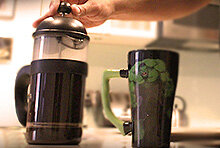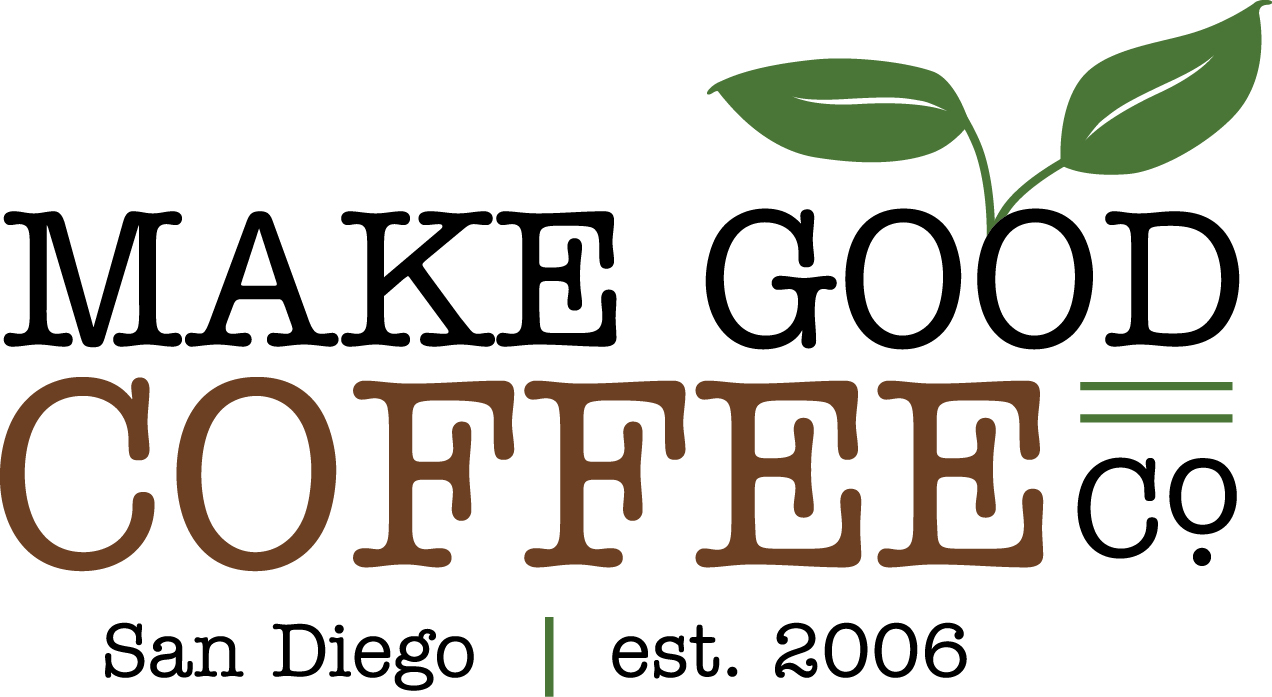Four Ways to Make Good Coffee
 It's been awhile since I've written something "back to basics" about improving the coffee you make at home. I'm generally addressing a single topic or answering a particular question, and so I lose sight of the simpler advice.Many of the questions I receive deal with a specific part of making coffee at home, and I thought the timing was good to summarize a few of the simple ways that you can make better coffee at home.If you're already doing these things, congratulations! You didn't waste your time reading this article - it's enough to know that you scored an A+. The challenge can be that coffee snobs have all the right information, but at the end of the day - well, they're snobs. And nobody likes to be told what to do by a snob. In fact, they're hard to approach.Here are four simple ways that you can change or invest in how you make coffee at home.
It's been awhile since I've written something "back to basics" about improving the coffee you make at home. I'm generally addressing a single topic or answering a particular question, and so I lose sight of the simpler advice.Many of the questions I receive deal with a specific part of making coffee at home, and I thought the timing was good to summarize a few of the simple ways that you can make better coffee at home.If you're already doing these things, congratulations! You didn't waste your time reading this article - it's enough to know that you scored an A+. The challenge can be that coffee snobs have all the right information, but at the end of the day - well, they're snobs. And nobody likes to be told what to do by a snob. In fact, they're hard to approach.Here are four simple ways that you can change or invest in how you make coffee at home.
[ad#Google Adsense - use me]
#1: Buy Good Coffee Seem too simple? I don't think it is, because the great majority of coffee is still being sold from grocery stores or club stores like Costco. They are very convenient places to buy coffee because you were already there. However, they simply don't have the attention to freshness outside of their produce section.When you buy coffee from the grocery store, you are buying coffee that in all likelihood has already gone stale.When you buy coffee from Costco in a five-pound bag, even if it wasn't already stale, it will be before you get through that much coffee.Coffee has the most flavor and the most to enjoy when it is fresh. It is the most fresh when it was just roasted. It begins to expire after it's been roasted and a few weeks after that, it's stale. At a minimum, you should know on what exact date the coffee was roasted. You won't get this from coffee at the grocery store. You won't get it from the bulk coffee sold at a Starbucks outlet either. You'll likely only find it from a local coffee roaster in your area, hand-roasting coffee that is fresh and full of flavor when you buy it. Coffee roasters that sell their coffee online are a great option, provided they are telling you when your coffee was roasted.#2: Don't Grind It Until You Brew It
Seem too simple? I don't think it is, because the great majority of coffee is still being sold from grocery stores or club stores like Costco. They are very convenient places to buy coffee because you were already there. However, they simply don't have the attention to freshness outside of their produce section.When you buy coffee from the grocery store, you are buying coffee that in all likelihood has already gone stale.When you buy coffee from Costco in a five-pound bag, even if it wasn't already stale, it will be before you get through that much coffee.Coffee has the most flavor and the most to enjoy when it is fresh. It is the most fresh when it was just roasted. It begins to expire after it's been roasted and a few weeks after that, it's stale. At a minimum, you should know on what exact date the coffee was roasted. You won't get this from coffee at the grocery store. You won't get it from the bulk coffee sold at a Starbucks outlet either. You'll likely only find it from a local coffee roaster in your area, hand-roasting coffee that is fresh and full of flavor when you buy it. Coffee roasters that sell their coffee online are a great option, provided they are telling you when your coffee was roasted.#2: Don't Grind It Until You Brew It Another thing born of convenience is pre-ground coffee. The first point at which coffee starts going stale is when it is roasted. The second point is when it is ground. In fact, ground coffee expires at a faster rate than whole bean coffee. You should only grind your coffee when you are prepared to brew it. Otherwise, it's likely lost much of its flavor by the time you brew it.Invest in a grinder. You can go with a propeller grinder very inexpensively, and for the best grind, invest in a burr grinder.#3: Store It In The Right PlaceThe enemies of fresh coffee are: air, temperature change, and light.Keep your whole bean coffee in an airtight container that keeps light out, preferably a canister with a rubber band that provides a seal.Coffee should be kept at room temperature. Resist the urge to keep the coffee in the fridge or freezer. Coffee absorbs the smells of what's around it so if you put it in the fridge, it will neutralize the smell of your fridge like baking soda does, but the coffee will pick up those aromas in its flavor. Keeping coffee in the freezer is better than letting it go stale, but understand that the two dramatic changes in temperature (going in and coming out) will sap some of the freshness and flavor from the coffee.#4: Brew It Right
Another thing born of convenience is pre-ground coffee. The first point at which coffee starts going stale is when it is roasted. The second point is when it is ground. In fact, ground coffee expires at a faster rate than whole bean coffee. You should only grind your coffee when you are prepared to brew it. Otherwise, it's likely lost much of its flavor by the time you brew it.Invest in a grinder. You can go with a propeller grinder very inexpensively, and for the best grind, invest in a burr grinder.#3: Store It In The Right PlaceThe enemies of fresh coffee are: air, temperature change, and light.Keep your whole bean coffee in an airtight container that keeps light out, preferably a canister with a rubber band that provides a seal.Coffee should be kept at room temperature. Resist the urge to keep the coffee in the fridge or freezer. Coffee absorbs the smells of what's around it so if you put it in the fridge, it will neutralize the smell of your fridge like baking soda does, but the coffee will pick up those aromas in its flavor. Keeping coffee in the freezer is better than letting it go stale, but understand that the two dramatic changes in temperature (going in and coming out) will sap some of the freshness and flavor from the coffee.#4: Brew It Right At a minimum, put your single-serve pod coffee maker back in the box, and invest in a drip brewer for your kitchen. If you don't mind spending close to a hundred dollars on a machine that you will have for many years, I suggest Cuisinart's drip brewer. It's been my drip brewer of choice for many years. If you don't need all the bells and whistles, and would like a quality drip brewer at a reasonable price, go with Black and Decker for considerably less cost. It's a reliable machine that I always have on-hand for backup.If you're already familiar with the drip brewer and want to explore other brewing methods, there are plenty. They generally involve a little more manual work than just flipping a switch, but in return, you get a much stronger flavor experience. Just as the drip brewer was an improvement on the percolator before it, there have been many improvements on brewing the drip brewer way. Check out our Brewing Coffee page for an in-depth look at some of the other interesting ways to brew coffee.
At a minimum, put your single-serve pod coffee maker back in the box, and invest in a drip brewer for your kitchen. If you don't mind spending close to a hundred dollars on a machine that you will have for many years, I suggest Cuisinart's drip brewer. It's been my drip brewer of choice for many years. If you don't need all the bells and whistles, and would like a quality drip brewer at a reasonable price, go with Black and Decker for considerably less cost. It's a reliable machine that I always have on-hand for backup.If you're already familiar with the drip brewer and want to explore other brewing methods, there are plenty. They generally involve a little more manual work than just flipping a switch, but in return, you get a much stronger flavor experience. Just as the drip brewer was an improvement on the percolator before it, there have been many improvements on brewing the drip brewer way. Check out our Brewing Coffee page for an in-depth look at some of the other interesting ways to brew coffee.
